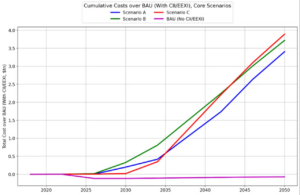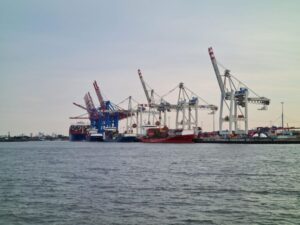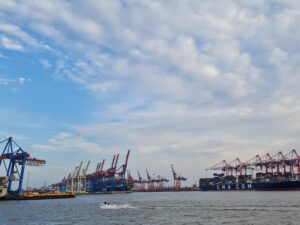Ships over 5,000 GT to be included in UK’s emissions trading scheme from 2026
The UK Emissions Trading Scheme Authority (UK ETS) has announced a package of reforms to tighten limits on industrial, power and aviation emissions, including shipping.

A package of reforms has been announced by the UK Emissions Trading Scheme Authority, the joint body comprising the UK Government, Scottish Government, Welsh Government and the Department of Agriculture, Environment and Rural Affairs in Northern Ireland that runs the scheme.
The scheme – which has been in place since 2021 – puts a limit on the total amount of greenhouse gases aviation, power and other energy intensive industries can emit. This incentivises industries away from costly fossil fuels and encourages them to cut their carbon footprint by investing in energy efficiency and cleaner, or renewable technologies, which in turn can boost energy security.
The reforms announced on 3 July build on the success of the UK ETS so far, increasing ambition while managing the transition in a way that supports affected industries.
For the first time the domestic maritime transport, waste incineration and energy from waste sector will be added to the scheme. This is in line with commitments to bring other high-emitting sectors in the UK ETS and will encourage companies in those sectors to cut their emissions and invest in cleaner alternatives.
The scheme will be applicable to large maritime vessels only, of 5000 gross tonnage and above, according to the authority.
These changes are being announced now to provide operators with time to prepare and ensure a smooth transition for affected businesses. The ETS will expand to cover the domestic maritime transport sector from 2026, as well as waste incineration and waste from energy sectors from 2028.
“With the recent rises in energy prices, it is more important than ever that we accelerate the transition away from costly fossil fuels, towards greener and more secure energy,” in a joint statement, UK ETS Authority Ministers, including Lord Callanan, Julie James MS, Màiri McAllan MSP and Gareth Davies MP said.
“Our UK Emissions Trading Scheme, along with other interventions, forms part of a wider strategy to provide a long-term framework to incentivise UK industries to decarbonise – seizing the huge opportunities that are arising from a rapidly expanding clean energy sector, and providing the certainty that industries need to invest in new green technologies.”
Reacting to the news that from 2026 domestic shipping will be included in the UK’s Emission Trading Scheme (ETS) UK Chamber of Shipping has called for funds raised from the inclusion of domestic shipping in the UK ETS to help hinder the drive to net zero.
“It is important that as the details of the scheme become clear it helps, rather than hinders, the drive towards net zero. This means ETS funds raised from domestic shipping must be used to aid the transition to net zero for the sector. This should include supporting the development of zero-emission vessels, fuels and technology and associated port infrastructure,” a UK Chamber of Shipping spokesperson said.
The EU Emissions Trading System (EU ETS) is a carbon market based on a system of cap-and-trade of emission allowances for energy-intensive industries and the power generation sector. It is the EU’s main tool in addressing emissions reductions, covering about 40% of the EU’s total CO2 emissions.
To remind, in December last year, the EU Council and the European Parliament agreed to include maritime shipping emissions within the scope of the EU ETS. They agreed on a gradual introduction of obligations for shipping companies to surrender allowances: 40% for verified emissions from 2024, 70% for 2025, and 100% for 2026.
Related Article
-
EU poised to start taxing shipping emissions in 2024
Rules & Regulation









